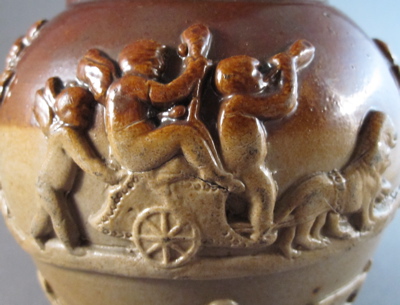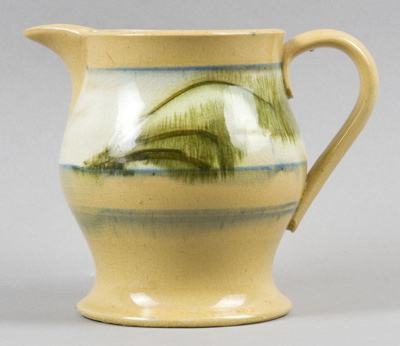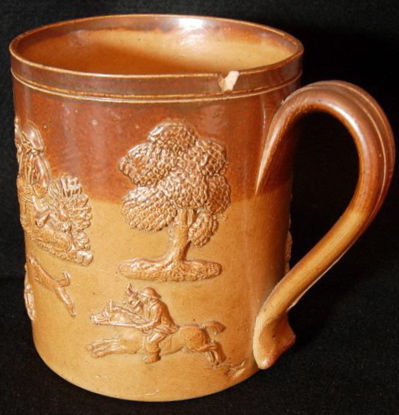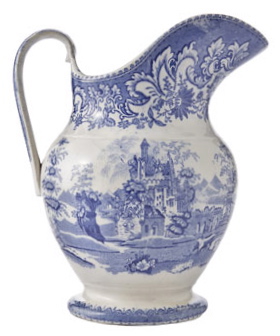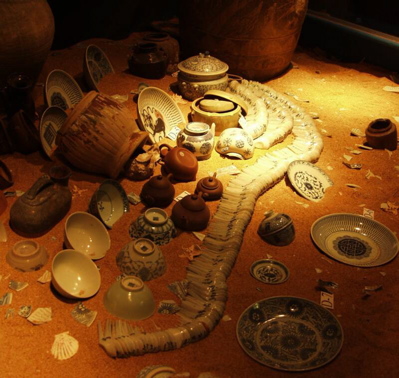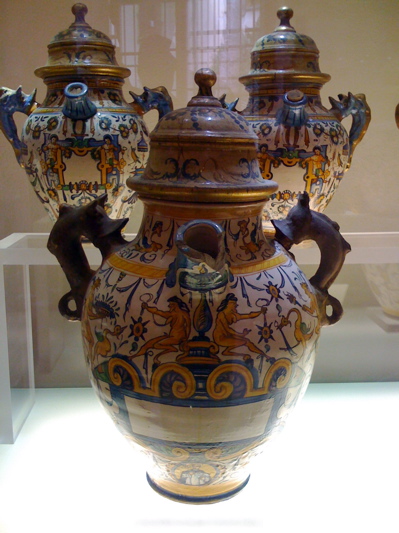A two-tone unsigned salt-glazed stoneware jug from England, possibly by Doulton Lambeth. The sprigged hunting scene & cupids decoration has a glass-like coating, achieved by adding salt to the kiln and firing at approx 1660 degrees F (780 degrees C). As the sodium chloride vaporizes and bonds with the silica in the clay, it creates a silicate glass “salt-glaze” finish

Jug stands 5-1/2″ tall and is 5-1/2″ wide
A detail of the applied sprig decoration to the front of the jug
Judging by the many chips along the rim, I am not surprised this jug lost its handle as well, as it was not doubt used daily for many years in an English pub
The tin handle with thumb grip and horizontal band replaces the original handle, created by a tinsmith in the middle to late 1800’s. Tin replacement handles are one of the most common types of inventive repairs and I have dozens of examples in my collection
This jug still has its original handle and gives an idea of what the handle on my mended piece would have originally looked like
Photo courtesy of WorthPoint

